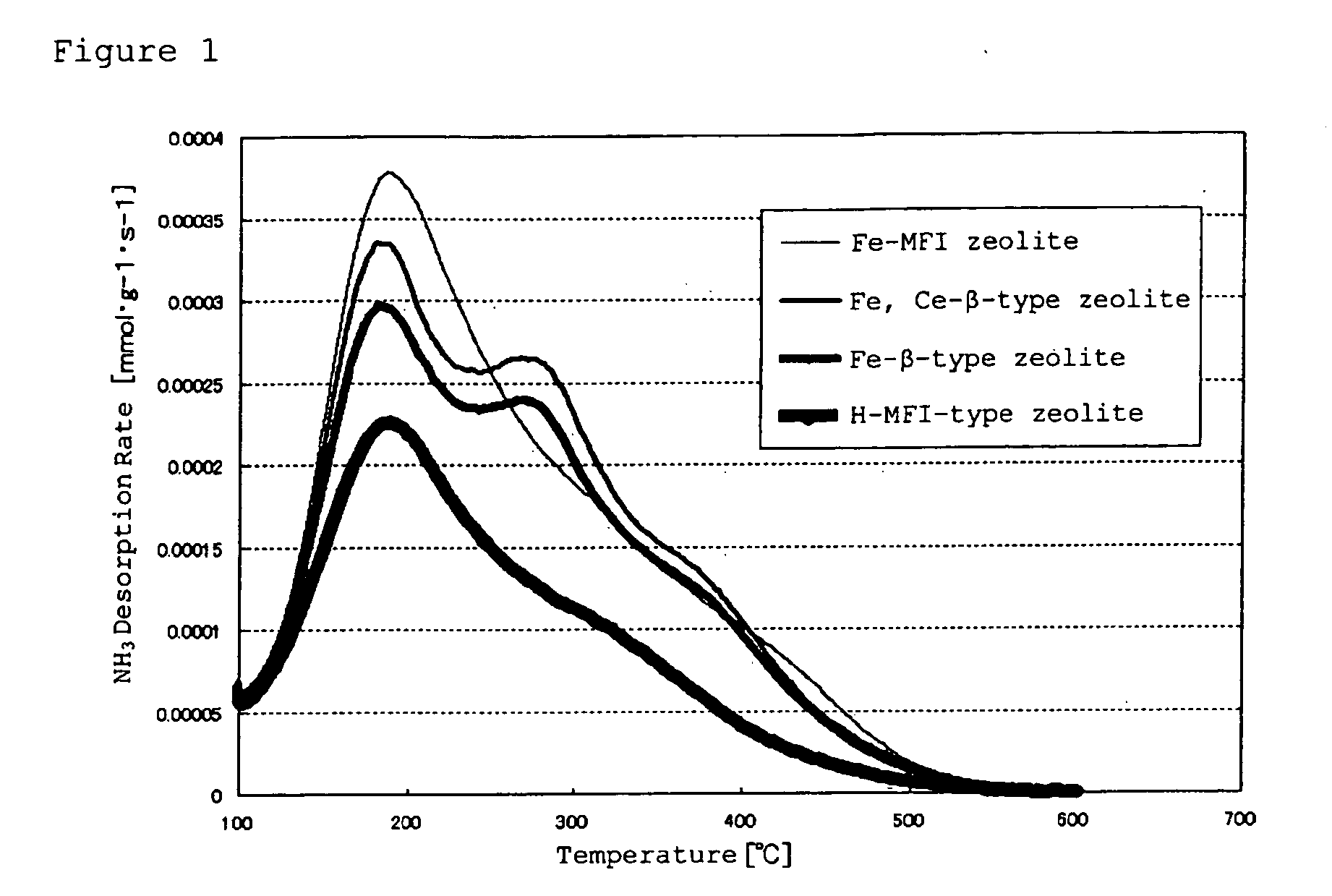Exhaust gas purification method using selective reduction catalyst
a technology of selective reduction and exhaust gas, which is applied in the direction of separation processes, machines/engines, mechanical equipment, etc., can solve the problems of difficult suppression of toxic substances by conventional nosub>, nhsub>3/sub>itself has irritating odor or hazardous property, and conventional catalysts or control methods are not able to achieve satisfactory purification of exhaust gas. , to achieve the effect of simple configuration and high efficiency
- Summary
- Abstract
- Description
- Claims
- Application Information
AI Technical Summary
Benefits of technology
Problems solved by technology
Method used
Image
Examples
example
[0116]Explanation will be given below to still more clarify characteristics of the present invention, with reference to Examples and Comparative Examples, however, the present invention should not be limited to these Examples. It should be noted that the catalysts to be used in the present Examples along with Comparative Examples were prepared by the following methods.
[Production of the Present SCR Catalyst (1)]
[0117]Slurry was obtained by the addition of a titanium-silicon complex oxide (silicon content as converted to SiO2: 10% by weight, BET value: 100 m2 / g), water, β-type zeolite ion exchanged with an iron element (concentration as converted to the iron element: 2% by weight, ion exchanged amount=70%, SAR=35), MFI-type zeolite ion exchanged with an iron element (concentration as converted to the iron element: 2% by weight, ion exchanged amount=70%, SAR=40), β-type zeolite ion exchanged with an iron element and a cerium element (concentration as converted to the iron element: 2% ...
examples 1 to 4
Comparative Examples 1 to 4
[0133]On each SCR obtained as above, by arranging an oxidation catalyst at the former stage of the present SCR catalysts, along with the Comparative SCR catalysts, “DOC+SCR” was formed, and NOx purification performance and concentration of slipping NH3 were measured under the following measurement conditions, and the results are shown in Table 2. The NOx purification performance is defined by “[NOx concentration at the catalyst entrance−NOx concentration at the catalyst exit] / [NOx concentration at the catalyst entrance]”, and is shown as “NOx conversion rate” in Table 3, and as for the concentration of slipping NH3, “NH3 concentration at the catalyst exit” is shown as “NH3 slip concentration” in Table 3.
[0134]It should be noted that the DOC and the catalyzed DPF have oxidation function, and also have function to decrease NO ratio in NOx. In the present Examples, explanation will be given on a layout of “DOC+SCR”, however, it is natural that “DOC+DPF+SCR” e...
PUM
| Property | Measurement | Unit |
|---|---|---|
| weight | aaaaa | aaaaa |
| weight ratio | aaaaa | aaaaa |
| cell density | aaaaa | aaaaa |
Abstract
Description
Claims
Application Information
 Login to View More
Login to View More - R&D
- Intellectual Property
- Life Sciences
- Materials
- Tech Scout
- Unparalleled Data Quality
- Higher Quality Content
- 60% Fewer Hallucinations
Browse by: Latest US Patents, China's latest patents, Technical Efficacy Thesaurus, Application Domain, Technology Topic, Popular Technical Reports.
© 2025 PatSnap. All rights reserved.Legal|Privacy policy|Modern Slavery Act Transparency Statement|Sitemap|About US| Contact US: help@patsnap.com


